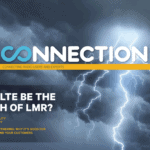PERSPECTIVE: Here’s a light-hearted look at the serious world of communications for the police officers, utilities crews, emergency medical people, fire crews and many others who keep our civilization up and running. John Carter, Senior Design Engineer at Tait, advocates for these day-to-day heroes. He dons a virtual hard-hat/helmet/cap as he helps to develop new ways to bring them information – simply, seamlessly and without impacting on their duties
Whatever industry or sector they are involved in, these are the people who operate the core systems that hold our civilization together. Whether they are involved in law and order, emergency services, or critical infrastructure, common features of all these teams are:
- they are very mobile and go wherever the problem is,
- they need a lot of communication tools to do a complex job,
- they’re out there when things are going wrong – often dangerously wrong.
Trust me, they know how important it is that the rest of us are safe, well, reconnected, powered-up and running ASAP. But what they really need is more understanding from those of us who are tasked with planning, designing, developing, installing, integrating, restoring and maintaining their communications.
“WE DON’T NEED ANOTHER GADGET”
These guys and gals are surrounded by technology. They can hardly move in their vehicles for all the gadgets, so the answer to their prayers is unlikely to be another gadget. But they do need something to plug those gadgets into, to feed them power and data, to make those gadgets play nice together and with the back office.
Wouldn’t it be nice if one of their existing gadgets could do that for them?
“PLEASE, NO MORE APPLICATIONS!”
Mostly, they work for large organizations and agencies that have very large, very sophisticated back office systems and business processes – often highly regulated and standardized, and always eye-wateringly costly.
So they already have applications for storing and retrieving data records, for GIS and location information, for work flows and planning systems, for projects and billing, for SAPs and tracking, and a hundred other things. They need to interact with any or all of those applications, in real time, securely and reliably, even when they run out of coverage. Even when power or communications infrastructure is down.
Because those back office systems are multimegabuck monsters, you can’t expect the back office to change to work with whatever you want to put in their vehicle. That tail isn’t going to wag that dog. You need to come up with stuff that plays nice with what the back office already has.
“WE DON’T CARE ABOUT LMR, GSM, LTE, OR ALPHABET SOUP”
These people are doing a hard enough job – and we don’t want them spending time trying to access critical information, or navigating through highly complex communications technology on top of everything else. They just need stuff that works with whatever bearer, network, channel or data pipe is available, cheapest and best. And when nothing is available? It needs to keep on working from mirrored data, saving new data and information. When a bearer becomes available again, it must quietly sync the data without any fanfare. Is that too much to ask?
WHAT CAN WE DO TO HELP THESE MOBILE “MAKE IT ALL BETTER” HEROES?
It’s actually not all that difficult, once we understand it isn’t about new applications or new hardware gadgetry. All we need is the ability and will to integrate the reliable, robust communications technology that already exists in each and every vehicle, with their back office systems.
Here’s what we need to provide:
- multi bearer voice and data pipes,
- a rich set of data interfaces; USB, Ethernet, WiFi, Bluetooth, CAN, audio, video … ,
- a router with a PTT switch (This is the integration Black Box of Choice that resolves issues like “What will we plug the other gadgets into? Where will they get power and data? What will make them play nice together?),
- large storage capacity in every vehicle to mirror, distribute and synchronize databases, because the work doesn’t stop when the coverage runs out,
- large storage capacity to store audio and video logs.
Oh, and they would like all this to be robust, heat proof (and/or cold proof), vibration proof, secure and inside something that’s already in the vehicle when the crisis hits! Thank you.
 This article is taken from Connection Magazine, Issue 7. Connection is a collection of educational and thought-leading articles focusing on critical communications, wireless and radio technology.
This article is taken from Connection Magazine, Issue 7. Connection is a collection of educational and thought-leading articles focusing on critical communications, wireless and radio technology.
Share your views, comments and suggestions in the Tait Connection Magazine LinkedIn group.



